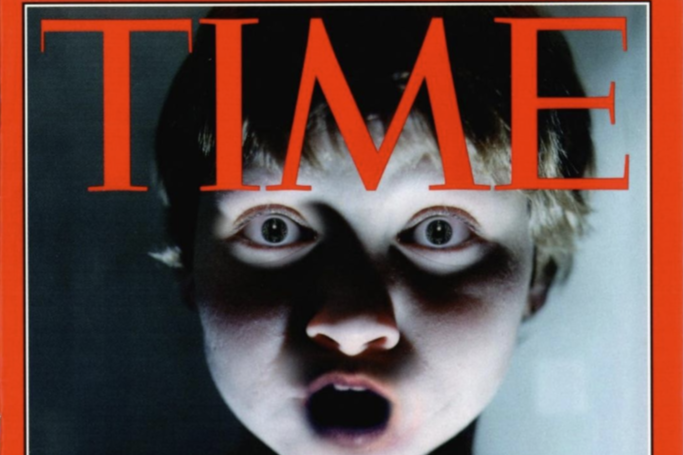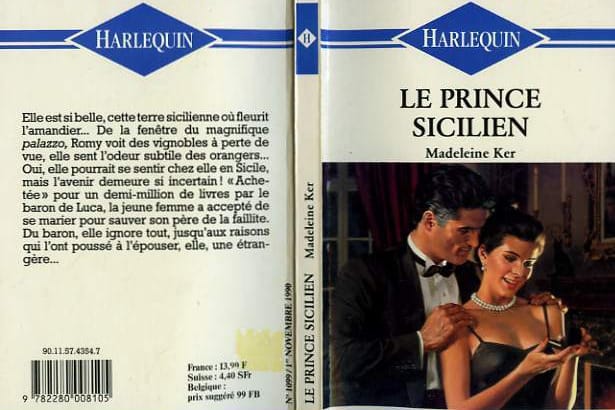Read more of this story at Slashdot.
Read more of this story at Slashdot.

Developers making mods and plugins for hentai games and sex toys say Github recently unleashed a wave of suspensions and bans against their repositories, and the platform hasn’t explained why.
Developers I spoke to said the community estimated around 80 to 90 repositories containing the work of 40 to 50 people went down recently, with many becoming inaccessible around late November and early December. Many of the affected accounts are part of the modding community for games made by the now-defunct Japanese video game studio Illusion, which made popular games with varying degrees of erotic content. One of the accounts Github banned contained the work of more than 30 contributors in more than 40 repositories, according to members of the modding community that I spoke to.
Github didn’t tell most suspended users what terms they broke to earn a suspension or ban, and developers told me they have no idea why their accounts went down without notice. They said they thought they were within Github’s acceptable use guidelines; even though they make mods for hentai games and things like interactive vibrator plugins, they took care to not host anything explicit directly in their repositories.
“Amongst my repositories there were no explicitly sexual names or images anywhere in the code or the readme, the most suggestive naming would be on the level of referencing the dick as ‘the men thing’ or referencing the sex as ‘huffing puffing,’” one developer, Danil Zverev, told me. He makes plugins for an Illusion game called Koikatsu. Zverev said he’s been using Github for this purpose since 2024, but on November 18, his Github page was “completely deleted,” he said. “No notifications anywhere, simply a 404 error when accessing the page and inability to log in on the web or in the mobile app. Also it does not allow me to register a new account with the same name or email.”
Github updated its acceptable use policies in October 2025 to forbid “sexually themed or suggestive content that serves little or no purpose other than to solicit an erotic or shocking response, particularly where that content is amplified by its placement in profiles or other social contexts.” This include pornographic content and “graphic depictions of sexual acts including photographs, video, animation, drawings, computer-generated images, or text-based content,” according to the terms.
“We recognize that not all nudity or content related to sexuality is obscene. We may allow visual and/or textual depictions in artistic, educational, historical or journalistic contexts, or as it relates to victim advocacy,” Github's terms of use state. “In some cases a disclaimer can help communicate the context of the project. However, please understand that we may choose to limit the content by giving users the option to opt in before viewing.”

Zverev said he didn’t write to support because he sees “such effort as fruitless and would rather move on to a different platform instead.” But even Github users who did try to get help from the platform’s support hit dead ends.
A developer who goes by VerDevin, who makes Blender modding guides, utility tools and plugins for a game called Custom Order Maid 3D2, told me in an email that users of his mods started reporting difficulty accessing his repositories starting in late October. At that point, he could still access their account while logged in, but not when logged out.
“Turned out, as you already know, that my account was ‘signaled’ and I had to purposefully go to the report section of Github to learn about it. I never received any notifications, by mail or otherwise,” VerDevin told me. “At that point I sent a ticket asking politely for clarifications and the proceedings for reinstatement.”
Github Trust & Safety replied with a generic message: “If you agree to abide by our Terms of Service going forward, please reply to this email and provide us more information on how you hope to use GitHub in the future. At that time we will continue our review of your request for reinstatement.”
VerDevin said they replied the following day, agreeing to the terms and promising to remove whatever Github deemed inappropriate—information the platform still hadn’t given them. “I did not take actual steps toward it as at that point I still didn't know what was reproach of me,” they said.
A month passed before Github replied. “Your account was actioned due to violation of the following prohibition found in our Acceptable Use Policies: Specifically, the content or activity that was reported included multiple sexually explicit content in repositories, which we found to be in violation of our Acceptable Use Policies,” Github wrote to VerDevin.
“At that point I took down several repositories that might qualify as an attempt to show good faith (like a plugin named COM3D2.Interlewd),” they said. Github restored his account on December 17—several weeks later, the day after I sent them a link to his account asking why it was banned—but they still haven’t heard anything about what specific content caused it to be “actioned.”
Github did not respond to my multiple requests for comment about why these accounts were banned. I sent Github’s press team links to several banned accounts, and they reinstated a few, but didn’t provide a reason or reply when I asked what caused the bans in the first place.
The situation is illustrative of a longstanding problem on almost every platform: the terms of use, especially when it comes to adult content, are applied confusingly and sporadically. The affected repositories represent tools used by potentially hundreds of thousands of gamers; the English Koikatsu modding Discord community alone has more than 350,000 members. A developer who goes by Sauceke, who Github suspended in mid-November without explanation, said their open-source adult toy mod users are now encountering broken links or simply can’t find any of their work.
“Perhaps most frustratingly, all of the tickets, pull requests, past release builds and changelogs are gone, because those things are not part of Git (the version control system),” Sauceke told me. “So even if someone had the foresight to make mirrors before the ban (as I did), those mirrors would only keep up with the code changes, not these ‘extra’ things that are pretty much vital to our work.”
Github reinstated Sauceke’s account on Tuesday, following another request for comment from me asking why anyone was banned—seven weeks after initially suspending them. Github support sent them a message: “Thank you for the information you have provided. Sorry for the time taken to get back to you. We really do appreciate your patience. Sometimes our abuse detecting systems highlight accounts that need to be manually reviewed. We've cleared the restrictions from your account, so you have full access to GitHub again.”
But even as Github reinstates accounts, pieces of users’ repos are missing. In Sauceke’s account and others, including in the IllusionMods repo, all releases are hidden. “This makes the releases both inaccessible to users and impossible to migrate to other sites without some tedious work,” Sauceke said.
Github is the biggest open-source platform for developers, and especially for adult content creators who are often censored or marginalized elsewhere, discoverability on that platform is important. “It's the best place to build a community, to find like-minded people who dig your stuff and want to collaborate,” Sauceke said. If the banning spree goes beyond hentai game and toy modders, they said, it might push developers to explore other platforms. Some have already migrated their repos to GitGoon, an open-source platform specifically for adult developers, or Codeberg, Berlin-based nonprofit-run site similar to Github.
Read more of this story at Slashdot.

Book publisher HarperCollins said it will start translating romance novels under its famous Harlequin label in France using AI, reducing or eliminating the pay for the team of human contract translators who previously did this work.
Publisher’s Weekly broke the news in English after French outlets reported on the story in December. According to a joint statement from French Association of Literary Translators (ATFL) and En Chair et en Os (In Flesh and Bone)—an anti-AI activist group of French translators—HarperCollins France has been contacting its translators to tell them they’re being replaced with machines in 2026.
The ATFL/ En Chair et en Os statement explained that HarperCollins France would use a third party company called Fluent Planet to run Harlequin romance novels through a machine translation system. The books would then be checked for errors and finalized by a team of freelancers. The ATFL and En Chair et en Os called on writers, book workers, and readers to refuse this machine translated future. They begged people to “reaffirm our unconditional commitment to human texts, created by human beings, in dignified working conditions.”
HarperCollins France did not return 404 Media’s request for comment, but told Publisher’s Weekly that “no Harlequin collection has been translated solely using machine translation generated by artificial intelligence.” In its statement, it explained that the company turned to AI translations because Harlequin’s sales had declined in France.
“We want to continue offering readers as many publications as possible at the current very low retail price, which is €4.99 for the Azur series, for example,” the statement said. “We are therefore conducting tests with Fluent Planet, a French company specializing in translation for 20 years: this company uses experienced translators who utilize artificial intelligence tools for part of their work.”
According to Fluent Planet’s website, its translators “studied at the best translation universities or have decades of experience under their belt.” These human translators are aided by a proprietary translation agent Fluent Planet called BrIAn.
“When compared to standard machine translation systems that use neural networks, BrIAn can provide 2 to 3 times higher quality translations, that are more accurate, offer idiomatic phrasing, provide a deeper understanding of the meaning and a faithful representation of the style and emotions of the source text,” the site said. “BrIAn takes into account the author’s tone and intention, making it highly effective for complex literary or marketing content.”
Translation is a delicate work that requires deep knowledge of both languages. Nuances and subtleties—two aspects of writing AIs are notoriously terrible at—can be lost or deranged if not carefully considered during the translation process. Translation is not simply a substitution game. Idioms, jargon, and regional dialects come into play and need a human touch to work in another language. Even with humans, the results are never perfect.
“I will tell you that the author community is up in arms about this, as we are anytime an announcement arrives that involves cutting back on human creativity and ingenuity in order to save money,” romance author Caroline Lee told 404 Media. “Sure, AI-generated art is going to be cheaper, but it cuts out our cover artists, many of whom we've been working with for a decade or more (indie publishing first took off around 2011). AI editing can pick up on (some) typos, but not as well as our human editors can. And of course, we're all worried what the glut of AI-generated books will mean for our author careers.”
HarperCollins France is not the first major publisher to announce its giving some of its translation duties over to an AI. In March of 2025, UK Publisher Taylor & Francis announced plans to use AI to publish English-language books in other languages to “expand readership.” The publisher promised AI-translated books would be “copyedited and then reviewed by Taylor & Francis editors and the books’ authors before publication.”
In a manifesto on its website, In Flesh and Bone begged readers to “say no to soulless translations.”
“These generative programmes are fed with existing human works, mined as simple bulk data, without offering the authors the choice to give their consent or not,” the manifesto said. “Furthermore, the data processing remains dependent on an enormous amount of human labour that is invisibilized, often carried out in conditions that are appalling, underpaid, dehumanizing, even traumatizing (when content moderation is involved). Finally, the storage of the necessary data for the functioning and training of algorithms produces a disastrous ecological footprint in terms of carbon balance and energy consumption. What may appear as progress is actually leading to immense losses of expertise, cognitive skills, and intellectual capacity across all human societies. It paves the way for a soulless, heartless, gutless future, saturated with standardized content, produced instantaneously in virtually unlimited quantity. We are close to a point of no return that we would never forgive ourselves for reaching.”
The translation of the manifesto from French to English was done by the collective themselves.

Its whereabouts aren't publicly known, though it's believed to be in storage.
(Image credit: Julia Demaree Nikhinson)
